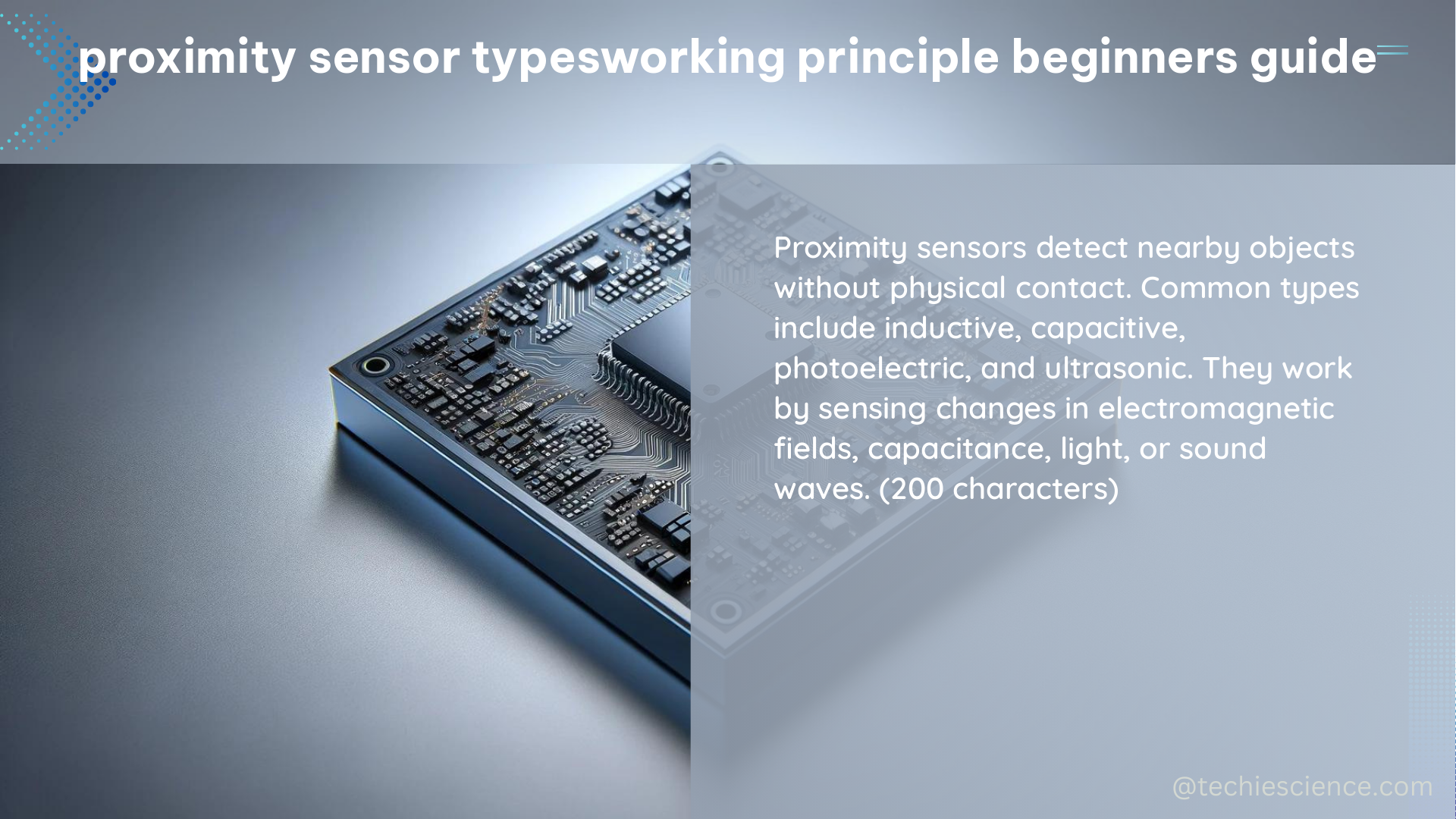Proximity sensors are essential components in various industrial and automation applications, designed to detect the presence or absence of objects without physical contact. This comprehensive guide delves into the different types of proximity sensors, their working principles, and technical specifications, providing a valuable resource for beginners in the field.
Inductive Proximity Sensors
Inductive proximity sensors operate based on the principle of electromagnetic induction. They emit an electromagnetic field, and when a metallic object enters the field, the component induces eddy currents, which are detected by the sensor to produce an output. These sensors are robust and can be used in harsh industrial environments. They are best at detecting ferrous items such as steel but can also detect non-ferrous metallic items like aluminum, brass, and copper, although the detection distance may be limited. Plastics, glass, or wood are not detectable by inductive proximity sensors.
Specifications:
– Detection distance: Typically less than 50 mm, although some variants can exceed 100 mm
– Shapes: Cylindrical, rectangular, and ring-style
– Sensing configurations: Perpendicular or horizontal
– Output configurations: NPN, PNP, or non-polarity/non-contact
Capacitive Proximity Sensors

Capacitive proximity sensors detect objects based on changes in capacitance. They consist of two parallel plates that form a capacitor. When an object enters the sensing area, it affects the capacitance between the plates, which the sensor detects and converts into an output signal. Capacitive proximity sensors can detect various materials, including metals, plastics, and liquids, making them highly versatile.
Specifications:
– Detection range: Varies depending on the target material’s dielectric constant
– Shapes and sizes: Available in different configurations
– Applications: Level measurement, position detection, and intrusion detection
– Critical specifications: Sensing distance, output configuration, and temperature range
Ultrasonic Proximity Sensors
Ultrasonic proximity sensors use high-frequency sound waves to detect objects. They emit ultrasonic pulses and measure the time it takes for the echo to return, determining the distance to the target object. Ultrasonic proximity sensors can detect various materials, including solids, liquids, and gases, and are commonly used in distance measurement and object detection applications.
Specifications:
– Detection range: Varies depending on the target object’s size, shape, and distance
– Shapes and sizes: Available in different configurations
– Applications: Distance measurement, object detection, and level measurement
– Critical specifications: Sensing distance, output configuration, and temperature range
Photoelectric Proximity Sensors
Photoelectric proximity sensors use light to detect objects. They consist of an emitter that sends out a beam of light and a receiver that detects the reflected light. When an object enters the sensing area, it interrupts the light beam, which the sensor detects and converts into an output signal. Photoelectric proximity sensors are available in various configurations, including through-beam, retroreflective, and diffuse.
Specifications:
– Detection range: Varies depending on the light source’s intensity and the target object’s reflectivity
– Shapes and sizes: Available in different configurations
– Applications: Object detection, position detection, and presence/absence monitoring
– Critical specifications: Sensing distance, output configuration, and operating environment (e.g., ambient light conditions)
Magnetic Proximity Sensors
Magnetic proximity sensors detect the presence of magnetic fields. They are often used in applications where physical contact with the target object is not possible or desirable. Magnetic proximity sensors are available in two main configurations: reed switches and Hall Effect sensors. Reed switches consist of two flexible magnetic contacts that open or close a circuit when a magnetic field is present. Hall Effect sensors use a device that creates a voltage difference when exposed to a magnetic field.
Specifications:
– Detection range: Varies depending on the magnetic field’s strength and the sensor’s sensitivity
– Shapes and sizes: Available in different configurations
– Applications: Position detection, limit switching, and intrusion detection
– Critical specifications: Sensing distance, output configuration, and temperature range
Proximity Sensor Selection and Installation Considerations
When selecting a proximity sensor, several factors must be considered, including the target material, sensing distance, output configuration, temperature range, and environmental conditions (e.g., ambient light, vibration, and electromagnetic interference). It is also essential to consider the sensor’s mounting requirements, such as the orientation and clearance needed for proper operation.
Proximity sensors should be installed in a location that provides optimal sensing performance and minimizes interference from other equipment or environmental factors. The sensor’s orientation, mounting height, and cable routing are crucial factors to consider during installation. It is also essential to perform accuracy measurements and adjust the sensor’s settings as needed to ensure reliable and accurate detection.
Common Troubleshooting for Proximity Sensors
Common issues with proximity sensors include incorrect sensing distance, interference from other equipment or environmental factors, and improper mounting or wiring. To troubleshoot these issues, it is essential to follow the manufacturer’s guidelines and use diagnostic tools such as oscilloscopes, multimeters, and signal generators. Regular maintenance and calibration can also help prevent issues and ensure optimal performance.
References:
– Utmel. (2022). Proximity Sensors: Types, Working Principles and Applications. Retrieved from https://www.utmel.com/blog/categories/sensors/proximity-sensors-types-working-principles-and-applications
– Omron. (2022). Technical Explanation for Proximity Sensors. Retrieved from https://www.ia.omron.com/data_pdf/guide/41/proximity_tg_e_6_2.pdf
– Control.com. (2024). The Beginner’s Guide to Automation: Making Sense of Prox Sensors. Retrieved from https://control.com/technical-articles/the-beginners-guide-to-automation-making-sense-of-prox-sensors/
– RS Components. (2023). A Complete Guide to Proximity Sensors. Retrieved from https://uk.rs-online.com/web/content/discovery/ideas-and-advice/proximity-sensors-guide
– Robocraze. (n.d.). 5 Types of Proximity Sensor & Their Applications. Retrieved from https://robocraze.com/blogs/post/proximity-sensor-types

The lambdageeks.com Core SME Team is a group of experienced subject matter experts from diverse scientific and technical fields including Physics, Chemistry, Technology,Electronics & Electrical Engineering, Automotive, Mechanical Engineering. Our team collaborates to create high-quality, well-researched articles on a wide range of science and technology topics for the lambdageeks.com website.
All Our Senior SME are having more than 7 Years of experience in the respective fields . They are either Working Industry Professionals or assocaited With different Universities. Refer Our Authors Page to get to know About our Core SMEs.